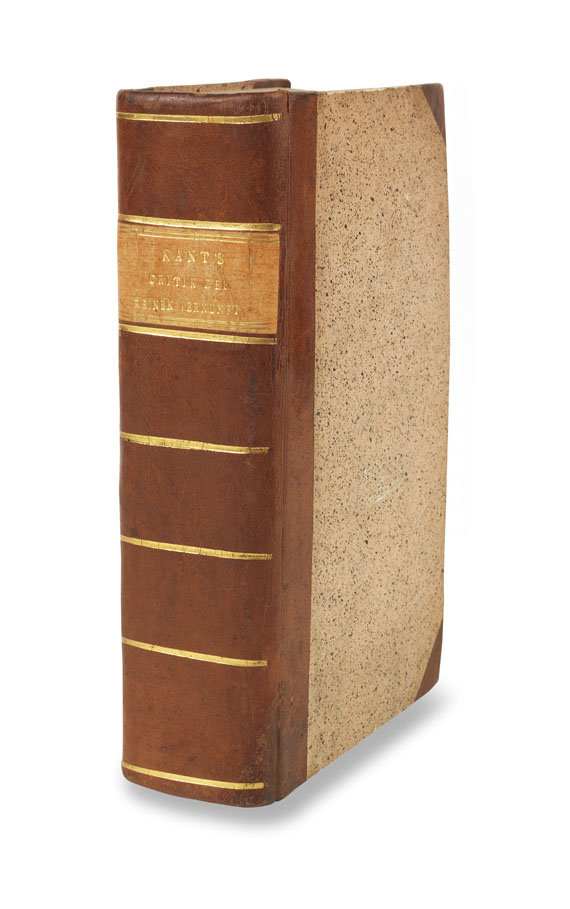Dictionary


First edition
A first edition, in the field of classic texts also called editio princeps (lat.), is the first printed edition of a text, or, to be more precise, the first publication of a work on the book market or as private print in independent book form. For collectors of valuable and rare books who compile their own library, first editions may have varying significance. “Buddenbrooks“, one of the most important novels by Thomas Mann, was released in small print run in 1901, realizes top prices in auctions today. Later editions first editions by the then acclaimed Nobel laureate in literature, often fetch far lower prices. In literature this is true for many debut works and early publications by renown authors, who were initially misjudged and discovered at a later point, such as it was the case with the early works by Franz Kafka, of which only few were sold during his lifetime – today they are in strong demand. When it comes to the present age, the example of Joanne K. Rowling‘s million-fold released “Harry Potter“ books is predominantly striking, as the debut was refused by many publishing houses. The first edition was published as a trial balloon in small circulation of just a few hundred copies by a small publishing house. Another important field in this context are natural scientific works in which distinguished discoveries and findings were outlined for the first time. At times they contained inconvenient truths for the church, as they questioned existing ideologies, This was, for instance, the case with works from Johannes Kepler and Tycho Brahe. But also first editions of scientific milestones from Einstein, Freud, Röntgen, Darwin, Newton are very popular and realize top prices.
Registers and bibliographies of persons are crucial for the identification of first editions, as there often are different prints and print variants in terms of misprints or diction, as well as prints on papers of different qualities.
The first edition is often confused with the first print. Strictly spoken, the first print only refers to the technical printing process, accordingly, the term refers to the first print of a multiply printed work. Some literary or scientific works were published as first prints, for instance in a magazine and were later released in first edition in a separate edition (e. g. writings from Karl May, Albert Einstein and many more.).
A first edition, in the field of classic texts also called editio princeps (lat.), is the first printed edition of a text, or, to be more precise, the first publication of a work on the book market or as private print in independent book form. For collectors of valuable and rare books who compile their own library, first editions may have varying significance. “Buddenbrooks“, one of the most important novels by Thomas Mann, was released in small print run in 1901, realizes top prices in auctions today. Later editions first editions by the then acclaimed Nobel laureate in literature, often fetch far lower prices. In literature this is true for many debut works and early publications by renown authors, who were initially misjudged and discovered at a later point, such as it was the case with the early works by Franz Kafka, of which only few were sold during his lifetime – today they are in strong demand. When it comes to the present age, the example of Joanne K. Rowling‘s million-fold released “Harry Potter“ books is predominantly striking, as the debut was refused by many publishing houses. The first edition was published as a trial balloon in small circulation of just a few hundred copies by a small publishing house. Another important field in this context are natural scientific works in which distinguished discoveries and findings were outlined for the first time. At times they contained inconvenient truths for the church, as they questioned existing ideologies, This was, for instance, the case with works from Johannes Kepler and Tycho Brahe. But also first editions of scientific milestones from Einstein, Freud, Röntgen, Darwin, Newton are very popular and realize top prices.
Registers and bibliographies of persons are crucial for the identification of first editions, as there often are different prints and print variants in terms of misprints or diction, as well as prints on papers of different qualities.
The first edition is often confused with the first print. Strictly spoken, the first print only refers to the technical printing process, accordingly, the term refers to the first print of a multiply printed work. Some literary or scientific works were published as first prints, for instance in a magazine and were later released in first edition in a separate edition (e. g. writings from Karl May, Albert Einstein and many more.).
Offers for First editions
Headquarters
Joseph-Wild-Str. 18
81829 Munich
Phone: +49 89 55 244-0
Fax: +49 89 55 244-177
info@kettererkunst.de
Louisa von Saucken / Undine Schleifer
Holstenwall 5
20355 Hamburg
Phone: +49 40 37 49 61-0
Fax: +49 40 37 49 61-66
infohamburg@kettererkunst.de
Dr. Simone Wiechers / Nane Schlage
Fasanenstr. 70
10719 Berlin
Phone: +49 30 88 67 53-63
Fax: +49 30 88 67 56-43
infoberlin@kettererkunst.de
Cordula Lichtenberg
Gertrudenstraße 24-28
50667 Cologne
Phone: +49 221 510 908-15
infokoeln@kettererkunst.de
Hessen
Rhineland-Palatinate
Miriam Heß
Phone: +49 62 21 58 80-038
Fax: +49 62 21 58 80-595
infoheidelberg@kettererkunst.de
We will inform you in time.




